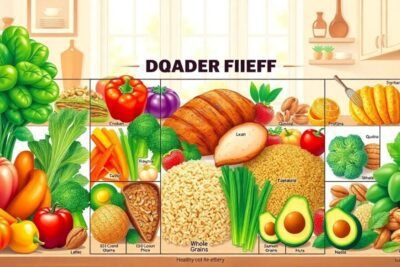
How to fix low blood pressure fast
Low blood pressure, or hypotension, is a condition that can lead to serious health complications. Understanding how to manage and rectify this issue quickly is essential for maintaining overall well-being. In this article, we will explore effective methods to raise blood pressure rapidly, ensuring you have the information you need at your fingertips.
- How to raise your blood pressure immediately at home
- What should you do if your blood pressure is too low?
- What causes low blood pressure and how to address it?
- What are the symptoms of low blood pressure in females?
- How to implement lifestyle changes to manage low blood pressure?
- What dietary adjustments can help raise low blood pressure?
- What immediate actions should you take for low blood pressure?
- Questions related to managing low blood pressure
How to raise your blood pressure immediately at home
If you find yourself experiencing low blood pressure, there are several immediate steps you can take at home to address the situation. Staying hydrated is crucial; drinking water can help increase blood volume and, in turn, raise blood pressure. It's advisable to consume fluids that contain electrolytes for a more effective boost.
Another quick remedy includes consuming foods high in salt. Salt is known for its ability to increase blood pressure, so incorporating salty snacks or meals can provide immediate relief. Adding a pinch of salt to your water can also be a fast and effective tactic.
Additionally, you can try elevating your legs. Raising your legs can improve circulation and help blood flow back to vital organs, potentially stabilizing your blood pressure. This method is both simple and effective in an emergency.
What should you do if your blood pressure is too low?
When your blood pressure dips too low, the first step is to recognize the symptoms. Common signs include dizziness, fainting, and fatigue. If you experience any of these, it’s important to sit or lie down immediately to prevent falls.
Next, consider drinking fluids, particularly those that contain electrolytes. Sports drinks or oral rehydration solutions can be beneficial in quickly addressing low blood pressure.
If symptoms persist, it may be necessary to consult a healthcare provider. They can assess your condition and recommend further treatments, which may include medications or lifestyle changes tailored to your needs.
What causes low blood pressure and how to address it?
Low blood pressure can be caused by various factors. Some common causes include dehydration, heart problems, and the effects of certain medications. Inadequate intake of essential nutrients can also play a role in hypotension.
Addressing low blood pressure often involves lifestyle changes. Increasing salt intake and staying well-hydrated are effective methods. Additionally, monitoring your blood pressure regularly can help you identify patterns and triggers.
In some cases, medical intervention may be necessary. Consulting with a healthcare professional can provide insights into underlying health issues that may need to be treated, such as heart disease or hormonal imbalances.
What are the symptoms of low blood pressure in females?
The symptoms of low blood pressure in females can mirror those experienced by the general population. Dizziness, fainting, and lightheadedness are prevalent symptoms. However, females may also experience fatigue and increased sensitivity to cold.
Hormonal changes, particularly during menstruation or pregnancy, can exacerbate low blood pressure symptoms. It's crucial for women to monitor their bodies and seek medical advice if they notice any persistent symptoms.
Furthermore, some women may experience nausea or palpitations. Recognizing these symptoms early can help in taking appropriate measures to manage low blood pressure effectively.
How to implement lifestyle changes to manage low blood pressure?
Implementing lifestyle changes can significantly help in managing low blood pressure. Start by ensuring you stay adequately hydrated throughout the day. Drinking enough water is key to maintaining a healthy blood volume.
Moreover, consider increasing your salt intake after consulting with a healthcare provider. Salt plays a vital role in raising blood pressure, especially for those who experience hypotension.
Regular exercise is another important factor. Engaging in physical activity enhances blood circulation and can help prevent drops in blood pressure. Even light exercises, like walking or yoga, can be beneficial.
Finally, be mindful of your posture. Avoid sudden movements and take your time when transitioning from sitting to standing to minimize the risk of dizziness.
What dietary adjustments can help raise low blood pressure?
Dietary adjustments can play a critical role in managing low blood pressure. Incorporating foods high in salt, such as pickles or olives, can quickly help raise blood pressure levels. Adding salty snacks to your diet is an easy way to boost your sodium intake.
Moreover, consuming more frequent, smaller meals can help stabilize blood pressure. Large meals can cause blood vessels to expand, leading to lower blood pressure. Frequent snacks can contribute to more consistent energy and blood flow.
Including foods rich in vitamin B12, folate, and iron can also be beneficial. These nutrients are essential for the production of red blood cells, which are crucial in maintaining healthy blood pressure levels.
What immediate actions should you take for low blood pressure?
In case of a sudden drop in blood pressure, the immediate actions you take can be crucial. First, sit or lie down to avoid fainting. Resting helps maintain blood flow to vital organs.
Next, drink fluids, preferably those that include electrolytes. Electrolyte solutions can quickly replenish lost fluids and raise blood pressure. If you're able, eat a salty snack as well to help boost levels.
It’s important to avoid hot showers or baths, as heat can cause blood vessels to dilate, further lowering blood pressure. Instead, aim for lukewarm water and ensure you’re not spending too much time in the heat to maintain stability.
How can I raise my low blood pressure fast?
To raise low blood pressure quickly, focus on hydration and dietary changes. Drinking a glass of water with a pinch of salt can help. Additionally, consuming high-salt foods will boost your sodium levels, providing a rapid response to low blood pressure.
What to do immediately if BP is low?
If you experience low blood pressure, sit down or lie down to prevent fainting. Consider drinking fluids, especially those with electrolytes, and try eating salty snacks. These actions can quickly stabilize your blood pressure levels.
How can I quickly bring my blood pressure up?
To quickly elevate your blood pressure, incorporate salty foods into your diet and ensure you hydrate effectively. Additionally, resting with your legs elevated can help redirect blood flow and improve circulation, addressing low blood pressure swiftly.
How do I get my blood pressure back low?
If you need to lower your blood pressure, focus on reducing sodium intake and increasing hydration with water. Regular physical activity and managing stress are also effective strategies to naturally lower blood pressure levels over time.










